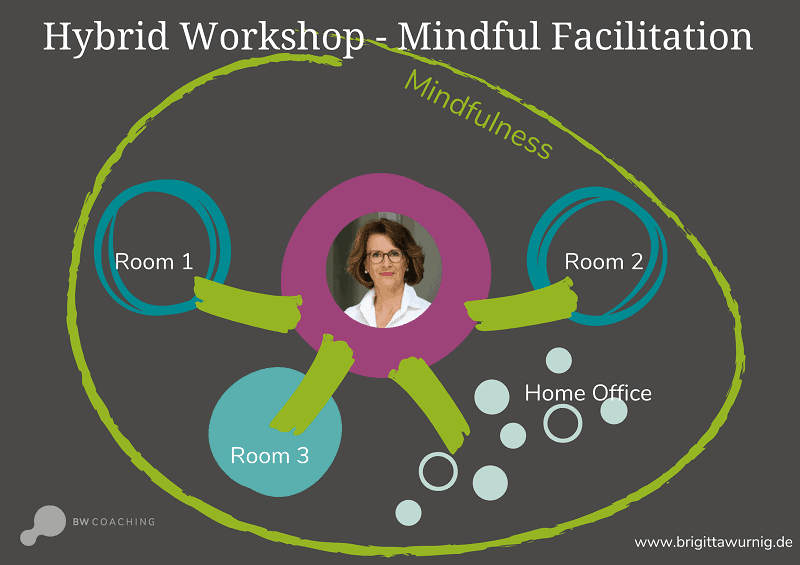Are you thinking about how to conduct a workshop with your team this year in which you would like to discuss difficult topics? Would you like to do an in-person workshop for this and some of your employees would prefer to participate from the home office because of the risk of infection? Or have regulations been introduced in your company that prohibit a workshop with many participants?
Then you must conduct a hybrid team workshop, which brings with it some unfamiliar requirements for the technical setup, the facilitation, and the participants.
Read today what methods I used in a hybrid team workshop with 40 participants who wanted to talk about improving collaboration in a difficult environment.
“Of course, I can do that,” I said when my client asked in the summer if I would like to facilitate a workshop for an international team consisting of about 40 people in several teams. The teams were just going through the sometimes-arduous effects of the pandemic on their way of working, struggling with increasingly tight deadlines and frustrated by the different expectations of results and handling of mistakes. At first, everything sounded like a familiar assignment. We expected about 30 participants on site and 10 participants who dialed in via videoconference. So far, so good.
I already knew the topics from my many years of coaching practice, and so I started the preparations. After the preliminary talks, the focal points were high. The agenda was designed, and a suitable space was even found, which offered sufficient distance for all participants who wanted to be present on site. The other participants should join from home office via video conference.
But then corona number increased, and the company tightened the meeting requirements. Only a maximum of 10 people was allowed to meet in one room. This meant that an in-person meeting in the larger group was no longer possible. What to do because the workshop should definitely take place?

The final workshop design provided for a hybrid constellation:
We had to find a suitable setup in a very short time, because the approx. 30 people still wanted to participate on site. In the end, we formed three groups of 8-10 people each, each sitting in a separate room with videoconferencing equipment. For all participants, including those in the home office, there was the same video conferencing dial-in, so that they were virtually connected. The framework conditions sounded feasible.
Then came the workshop day. I sat with seven participants in one of the rooms. On the large video screen we saw the other two groups in their rooms as well as the pictures of the remote participants.
Hey, for me it was a very strange situation. Almost unreal. I could see the seven people in the room, feel their presence and talk to them live. At the same time, the other people looked at me from the screen and expected me to guide them through the workshop. They seemed to me like actors in a movie, artificial, almost not real. Were these really my workshop participants?
At that moment, I listened into myself how it would ever be possible to connect with and between this large team in this setting. How could trust be built to open up and talk about difficult issues when we only connect through the screen? This moment had an impressive effect on me, and I decided to follow my experience and intuition. In short, I designed the mindfulness exercise, which was intended as an introduction, completely differently.

Starting with mindfulness, connect with each other
Instead of a simple breathing exercise to arrive, I led the participants through a so-called open awareness exercise. In doing so, we are focusing our inner attention not only on ourselves, but on our surroundings and the people present in it.
So first I drew attention to the breath so that we could feel grounded and safe. We then extended our attention to the other participants, who either also sat in the room or had dialed in. It helped to imagine how the other people, some of whom were also known, sat in the rooms and in the home office.
We realized that we were all connected by the desire to participate in this workshop. With this picture we sat for a few minutes and felt the growing connection.
Finally, we turned our attention back to our breath and opened our eyes to return to the virtual space.
This open-awareness exercise had a noticeable effect. The participants in my room looked more relaxed, the others looked much more present into the camera. The posture was more focused. There was less attention to mobile phones and laptops. The view was directed at the camera and thus at the other participants.
For me, this made the people in the other virtual rooms much more tangible. I started treating them as if they were in the meeting room with me in person. The hybrid setting suddenly didn’t bother.
So with the mindfulness exercise we had created a connection and set the framework for greater openness. Only now was I able to open the workshop with the summary from the preliminary discussions and name the so-called white elephants.
In doing so, I laid the foundation for the so-called psychological safety, which is necessary for the team to get involved with their own experiences, fears and hopes on the topics. In the ensuing discussion with and without the executives, a flow arose. In the end, an important concrete measure was defined, which was subsequently implemented.
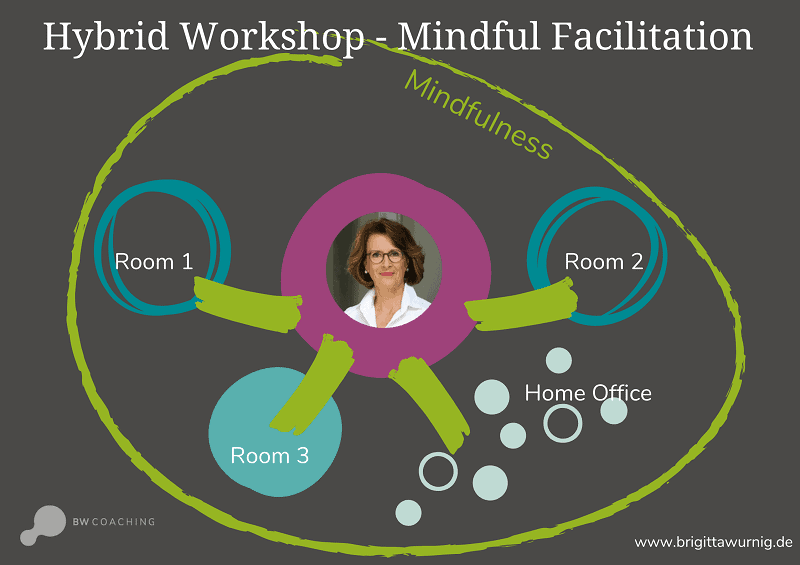
In addition to the discussion facilitation, my main task was to maintain this flow in a hybrid setting. It was important that the participants did not switch off internally, which could easily happen with the virtual setting.
For this I used the method to act as a resonant body for unspoken sensations and emotions. Emotions give us helpful information to understand facts and make decisions.
I kept going into a mindful listening mode and i.e. I noticed what was said between the lines. I reported this information back to the teams, which in turn triggered thoughts and emotions that were important for the discussion. The method worked really well to express the emotions that are swirling around in the virtual setting. They were not lost despite the hybrid format.
Close the workshop with mindfulness
Shortly before the end of the workshop, I realized that we couldn’t just turn off the videoconference and go our way. That would have been too abrupt an end. So I finished with another mindfulness exercise.
This time I drew the attention of the participants to what they had achieved together. I also invited them to thank their colleagues for participating in the workshop and contributing. The feeling of gratitude led to a joy that spread noticeably in the virtual space and could also be seen in the faces on the video screen. So strengthened, the entire team left the workshop in a much better emotional state than before. “The mood has improved significantly,” my client later reported, and the measure was also implemented.
My learning for the successful moderation of a hybrid workshop
- Establish an inner connection with and between all participants with mindfulness exercises
- Maintain flow with resonance feedback
- Create the foundation for psychological safety to talk about difficult issues
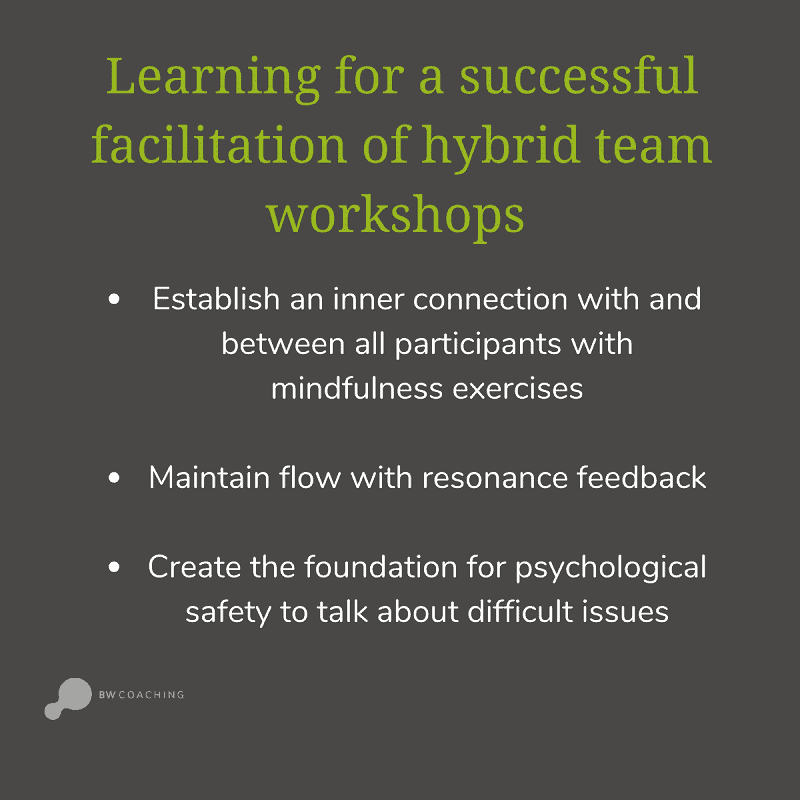
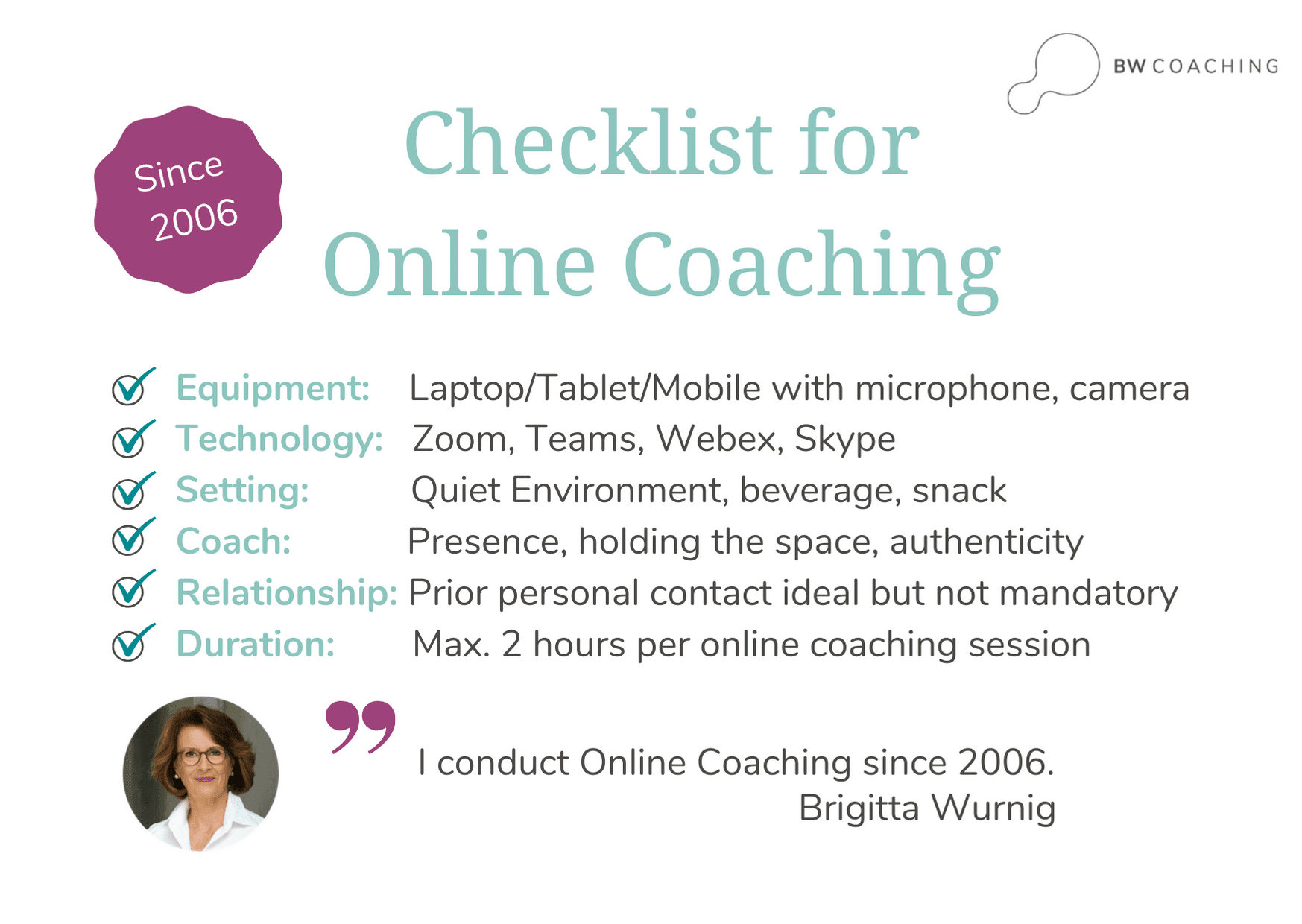
The methods of mindfulness and facilitation described come from my many years of coaching practice. They also work very well in my online coaching with individual executives, which I have been doing since 2006. It is also very important to establish and maintain the connection so that openness and personal development can take place.
In recent months, many teams have been switching to virtual workshops, which is a great development for all of us. I am very happy how much the teams can achieve and work out in virtual space. For me, mindfulness is a very important facilitation approach.
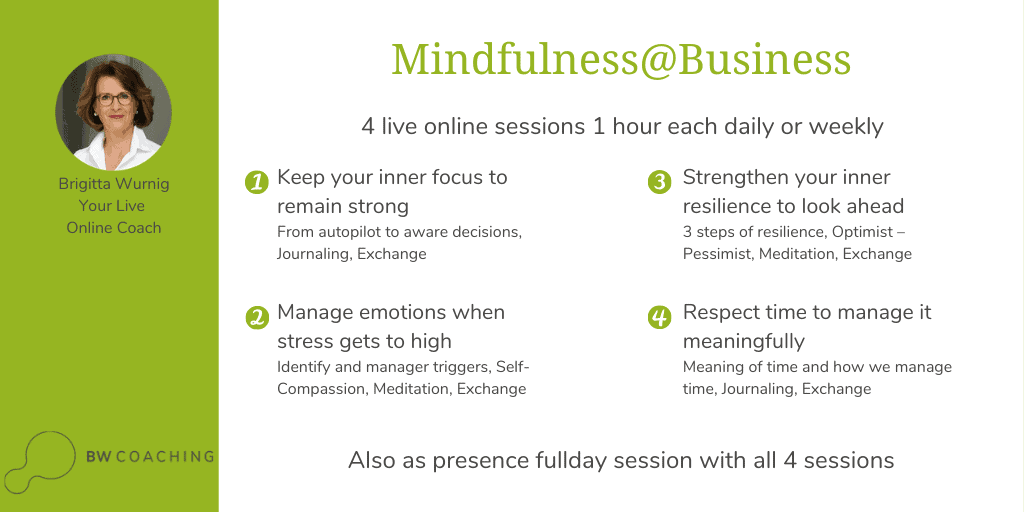
With my programs Mindfulness@Business, I also work online in shorter formats with teams and groups on their resilience, emotional strengthening, or inner focus. Please ask for your appropriate program.

